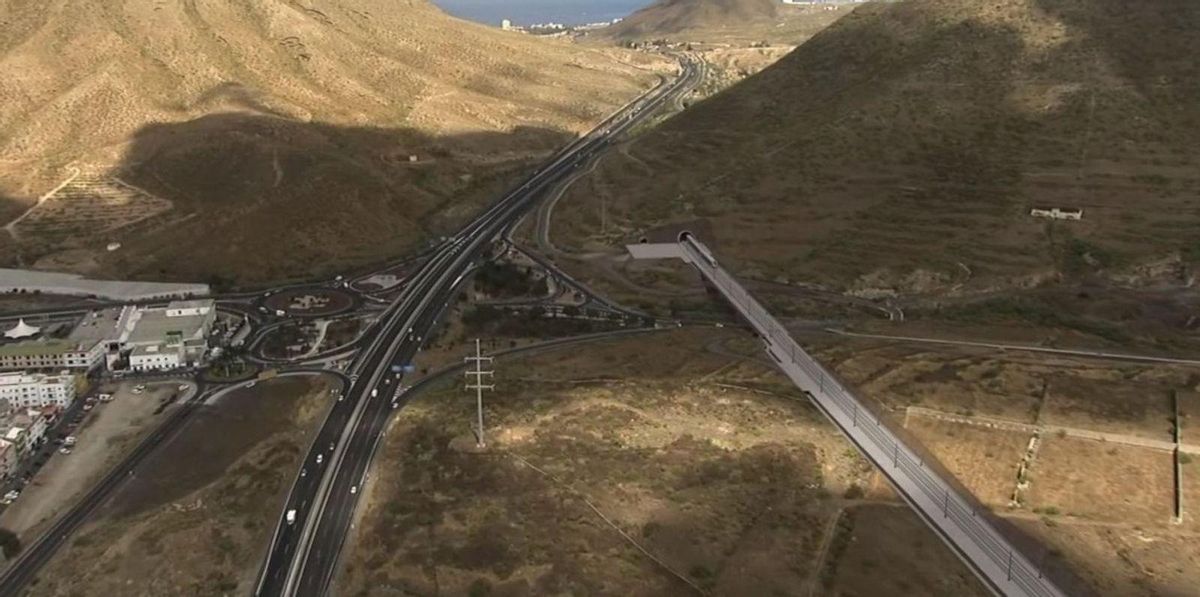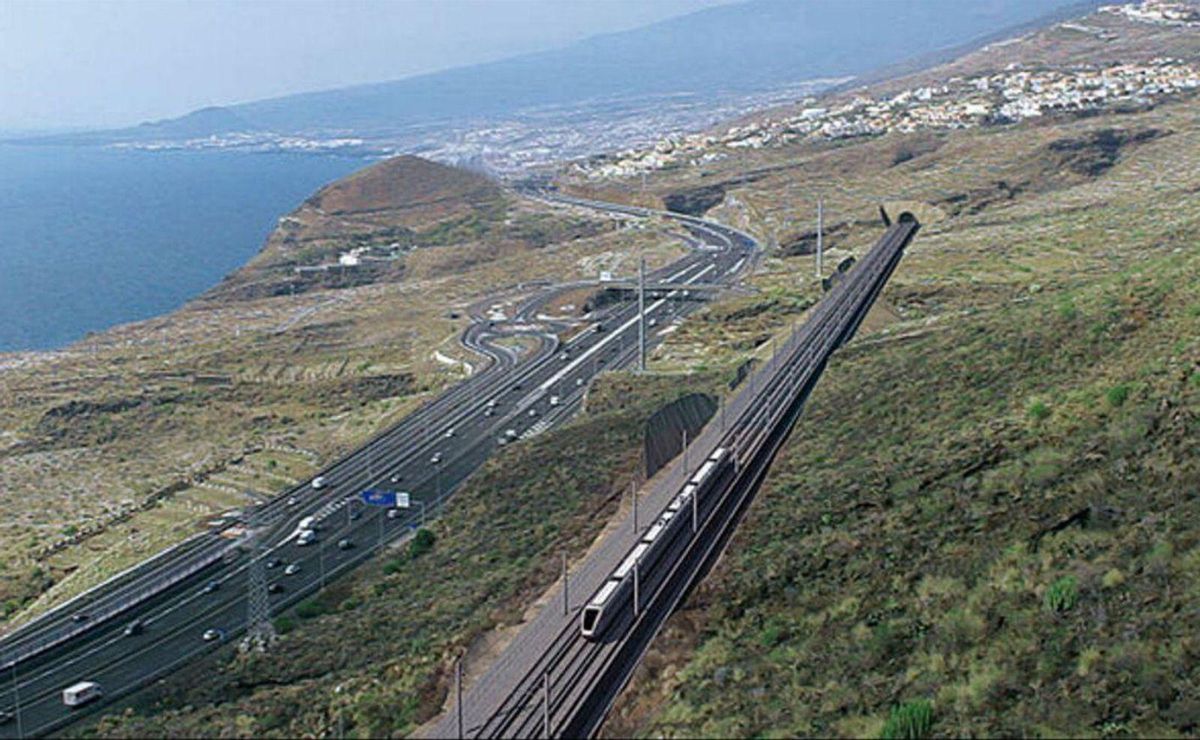Tenerife is set to host An infrastructure that will fundamentally transform the island. Upon completion, it will become the third busiest closure network in Spain, following only Madrid and Barcelona.
With an expected capacity of 175,000 passengers per kilometre, it will be six times greater than the area surrounding Seville and up to 47 times larger than that of Cantabria.
This initiative is known as the South Train of Tenerife, which is part of the Sustainable Insular Mobility Plan. This plan envisions that by 2045 there will be an island-wide rail loop comprising four major regional lines.

Infographics of the South Train as it passes through Guaza, in Arona. / Ed
Besides the connection between Santa Cruz and Adeje, plans also include the construction of a line in the north, linking the capital with Los Realejos (the initial intention is for it to be an aerial railway), another line connecting Icod and Adeje, and an underground line transporting passengers from Güímar to La Orotava.
The estimated cost of these guided transport systems is around 5.735 billion euros.
The project, at a glance
The South Train will link Santa Cruz de Tenerife with Adeje through a route of 79,741 metres, comprising eight distinct segments. Along its path, it will traverse the municipalities of Santa Cruz, El Rosario, Candelaria, Arafo, Güímar, Fasnia, Arico, Granadilla, San Miguel, Arona, and Adeje.
Beginning from Santa Cruz, the first stop will be in Santa María del Mar, followed by Candelaria and San Isidro, covering a stretch of over 40 kilometres. It will also make a stop at the South Airport before reaching Los Cristianos and concluding its journey at Costa Adeje.

Photomontage showcasing a segment of the South Train of Tenerife. / Ed
Interchange Facilities
Interchange facilities are planned at each stop, complete with dedicated parking, which will be either surface or underground.
Above ground, there will be passenger terminals and concourse buildings that could feature a lower level beneath the roads, as seen in San Isidro, or be constructed on the tracks as in Candelaria. In the latter instance, the passenger and concourse building will be situated within the platform area.
Tunnels
The line will comprise 17,483 metres of tunnels and 6,842 metres of false tunnels, in addition to 9,440 metres of viaducts and 1,695 metres of elevated sections.
The first stretch, leaving Santa Cruz, is expected to cost over 67 million euros, followed by the tunnels of Radazul (3,157 metres) and Lomo del Alferez (2,639 metres).
Even at Reina Sofía, the train will pass through smaller tunnels or false tunnels, with the interchange located underground.
Speed and Timetable
The maximum speed designated for the train in this project reaches 220 kilometres per hour.
This high-performance train will operate with a 15-minute service frequency, making the overall journey last approximately 39 minutes from departure to arrival.
San Isidro-Eje Priority
For the South Train project, it has been decided to prioritise the San Isidro-Eje section, with an investment of 800 million euros over a distance of 30 kilometres.
The travel time between these two locations is estimated at an average of 25 minutes, signifying a substantial reduction in journey time compared to current travel by private vehicle, particularly during peak hours.
In addition to easing road congestion, this section will connect strategic locations across the island, such as the industrial area of Las Chafiras, Tenerife Sur Airport, the Port of Los Cristianos, and the El Mojón Hospital. This development will facilitate a decrease of half a million daily car trips, lessening the burden on the TF-1 motorway.
















